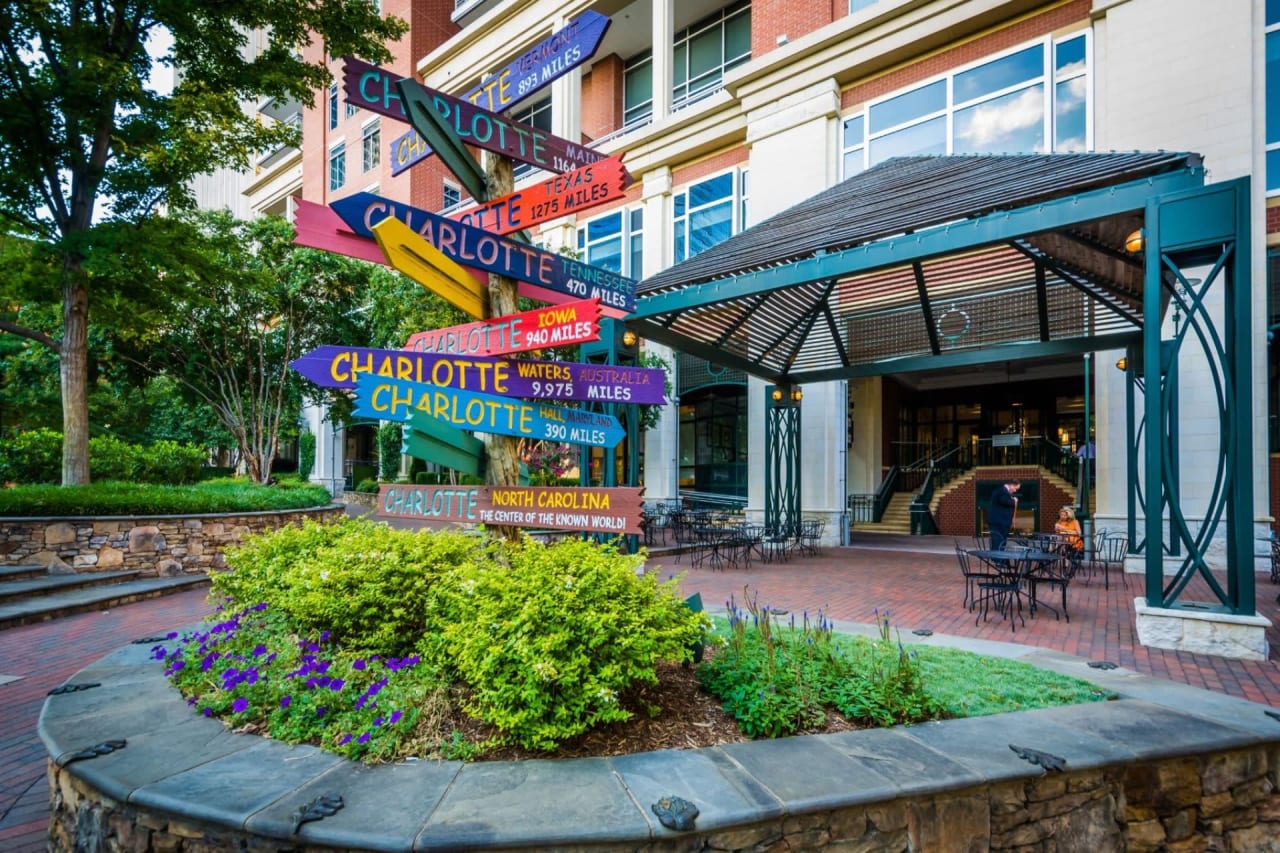What Does Charlotte Nc Mean?
Table of ContentsThe Single Strategy To Use For Charlotte Nc Apartments For RentSome Ideas on Charlotte Nc Airport Map You Need To KnowThe Ultimate Guide To Charlotte Nc AttractionsCharlotte Nc Airport Things To Know Before You Get ThisMore About Charlotte Nc Attractions
It was in this context that antebellum Charlotte existed. As late as 1860, North Carolina's biggest community, the port of Wilmington, had just 9,552 individuals. The port of Charleston was the area's just large city, with 40,519 residents; South Carolina's second biggest city was the funding of Columbia, with but 8,052.Charlotte was back in the Piedmont and 10 miles from the nearest river. Its gold mining interests and new railroads made it North Carolina's 6th largest "metropolitan place," yet it was little bit greater than a village with 2,265 people, a sign of the state's country character. The Civil Battle transformed the area's anti-urban bias.
Atlanta Constitution editor Henry Grady traveled the area stirring Southerners to activity with the woeful story of a Georgia funeral: "They cut via strong marble to make his tomb; and yet a little gravestone they put above him was from Vermont. They buried him in the heart of a pine forest, and yet the ache coffin was imported from Cincinnati.
Our Charlotte Nc Apartments For Rent Diaries

This motion for a "New South," as proponents announced it, had its beginnings even before the swan song was discharged in 1865, and acquired energy in the Restoration age of the late 1860s and early 1870s. After the 1870s clinical depression ended, the activity thrived. By that time a brand-new post-war generation of New South leaders was in control.
The battle-cry of the New South age was the slogan "Bring the Mills to the Cotton." The South's environment and soil had actually made it the United States' cotton cultivator because 1793, but the mills that transformed the cotton into clothes were primarily located in New England. There had actually been numerous excellent reasons for this.
In the 1870s, nonetheless, heavy steam power took over from water power (Charlotte NC). Now the mills might move anywhere that there was a continuous supply of water to make heavy steam. Investors began to observe the New South's boosters' sobs and build their mills in the South. By the time the early New South leaders transformed their power over to the following generation in the 1910s and 1920s, the change in instructions had actually been accomplished.
Not known Details About Charlotte Nc Area Code
Cash money observed, "little bit more use for them than a hog has for a morning coat." Already a leader in cotton trade, Charlotte went into the cotton manufacturing age after the 1870s clinical depression. In 1880, the city obtained its initial effective cotton mill. additional hints The Charlotte Cotton Mill developed by R. M. and D.
Calhoun, Tompkins was a citizen of Edgefield Area, South Carolina, and an illustrative New South leader that went North to make a civil engineering degree at Rensselaer Polytechnic Institute. He returned south to Charlotte in charge of selling Westinghouse steam engines and machinery to the brand-new mills pop over to this web-site and sector of the area.
He spoke extensively prompting industrialization, developed investment plans to draw in new mills, aided establish up colleges at Clemson and Raleigh to teach fabric engineers and chemists, and lobbied vigorously for positive regulations. Even Atlanta, which considered itself the facility of the New South, recognized Tompkins' pre-eminence. Atlanta Constitution editor Clark Howell stated emphatically that Tompkins "did a lot more for the industrial south than any kind of other man." Today chroniclers consider Tompkins one of one of the most crucial of the New South leaders.
Charlotte Nc - Truths
It was the initial mill owned and run, in addition to erected, by his company, and Tompkins utilized it to show his new concepts. These included his idea that mill workers with their rural histories ought to not be damaged by distance to town, interior pipes, or quarters more large than "one operative for each and every room of your home." The best-preserved house in the Atherton mill village has actually been marked a local Historic Building: a three-dimensional illustration from his prominent 1899 publication, "Cotton Mills: Business Features." The boom of the 1880s drew in various other cotton-related sectors.
A 5th cotton mill opened up in 1892, Highland Park Manufacturing Company # 1, headed by W. E. Holt and C. E. Johnston. With all this industrial advancement the town of Charlotte swiftly expanded right into a tiny city. If D. A. Tompkins had been the New South leader most responsible for Charlotte's industrial growth, Edward Dilworth Latta was the leading force in the town's physical change into a city.

One followed its overhanging cable the length of Profession Road from McDowell Street on one side of community to the railroad terminal on West Profession on the other. At the Square it crossed the 2nd track, which operated on Tryon Street from the Carolina Central terminal at Twelfth Street right out South Tryon.
Not known Factual Statements About Charlotte Nc Airport Hotels
They kept exactly on going out right into the farmland where the Four Cs were creating Dilworth. Dilworth was Charlotte's very first suburb, the start of the city we understand today. Entrepreneurs had actually been commuting to their brand-new country homes in the big cities of hop over to here the North given that the 1870s, and the New South leaders were figured out to bring this new metropolitan fashion to Charlotte.
This review also consists of the re-introduction of streetcars in Charlotte during 2015. By the very early 1890s, Charlotte was a little city with big-city aspirations. The 1890 demographics counted a reputable 11,557 individuals, but still much less than the capitals of Columbia and Raleigh and far behind the Carolinas' ports of Charleston and Wilmington.